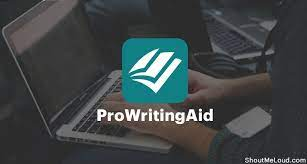Empowering Junior and Senior Student Writing and Reading Comprehension : The Rise of NLP Automated Feedback Applications - Part 2
Automated feedback application software leverages artificial intelligence and natural language processing techniques to provide students with immediate feedback on their written work. These applications analyze the text, identify areas for improvement, and offer suggestions for enhancing grammar, vocabulary, style, and coherence. Here are a few examples of Automated Feedback Applications.
Grammarly: Grammarly is a widely used automated feedback tool that helps students improve their writing. It detects grammatical errors, spelling mistakes, and punctuation issues, and offers suggestions for corrections. It also provides insights into sentence structure, word choice, and writing clarity.
ProWritingAid: ProWritingAid is an automated writing assistant that analyzes texts and offers suggestions for improving style, grammar, readability, and overall writing quality. It provides feedback on repetitive phrases, vague wording, sentence length, and other aspects that impact the readability and coherence of the text.
Hemingway Editor: Hemingway Editor focuses on improving the clarity and readability of written work. It highlights complex sentence structures, passive voice usage, and excessive adverbs, and suggests simpler alternatives to enhance the overall readability of the text.
Turnitin: Turnitin is primarily known for its plagiarism detection features but also provides automated feedback on grammar and writing style. It checks for issues like improper citation, and inconsistent formatting, and offers suggestions for improvement. It can be integrated with learning management systems and used by educators to provide feedback on students' submissions.
WriteLab: WriteLab is an AI-powered writing platform that offers detailed feedback on grammar, style, and organization. It provides suggestions for sentence restructuring, and word choice, and offers explanations to help students understand the reasoning behind the feedback.
LanguageTool: LanguageTool is an open-source automated writing assistant that checks for grammar, spelling, and style errors. It supports multiple languages and provides suggestions for improvement based on context.
These automated feedback applications can help students identify and correct errors in their writing, improve their language skills, and enhance the overall quality of their work. However, it's important to note that automated feedback should be used as a complement to human feedback and guidance, as human teachers can provide deeper insights, address specific questions, and offer personalized feedback tailored to individual students' needs.
PLAGIARISM DETECTION :
Text Comparison: The software breaks down the submitted document into smaller units, such as sentences or paragraphs, and compares them against the database. It searches for similarities in the wording, sentence structure, and overall composition.
Database Indexing: The plagiarism detection software maintains an indexed database containing a vast collection of texts. This database may consist of publicly available sources, licensed content, and previously submitted documents within an institution or educational platform.
Algorithms and Similarity Measures: Plagiarism detection algorithms employ various techniques to calculate the similarity between the submitted document and the texts in the database. This may involve comparing sequences of words, analyzing sentence structure, and assessing the overall coherence and context of the text.
Originality Reports: Once the comparison is complete, the software generates an originality report that highlights any matches or similarities found. These matches are usually presented with a percentage score indicating the level of similarity detected.
Manual Review: Plagiarism detection software doesn't make a definitive judgment on whether an instance of similarity is indeed plagiarism. It's up to the instructor or evaluator to review the flagged areas and determine if they indicate plagiarism or legitimate use of external sources.
Citation Analysis: Plagiarism detection software can also assist in verifying the accuracy of citations and references. It checks if the sources mentioned in the document are correctly cited and cross-references them against the database.









